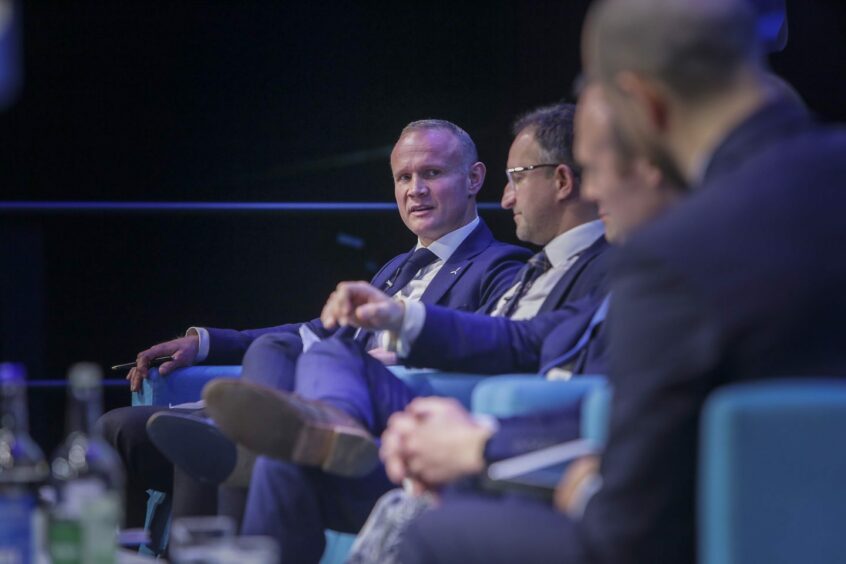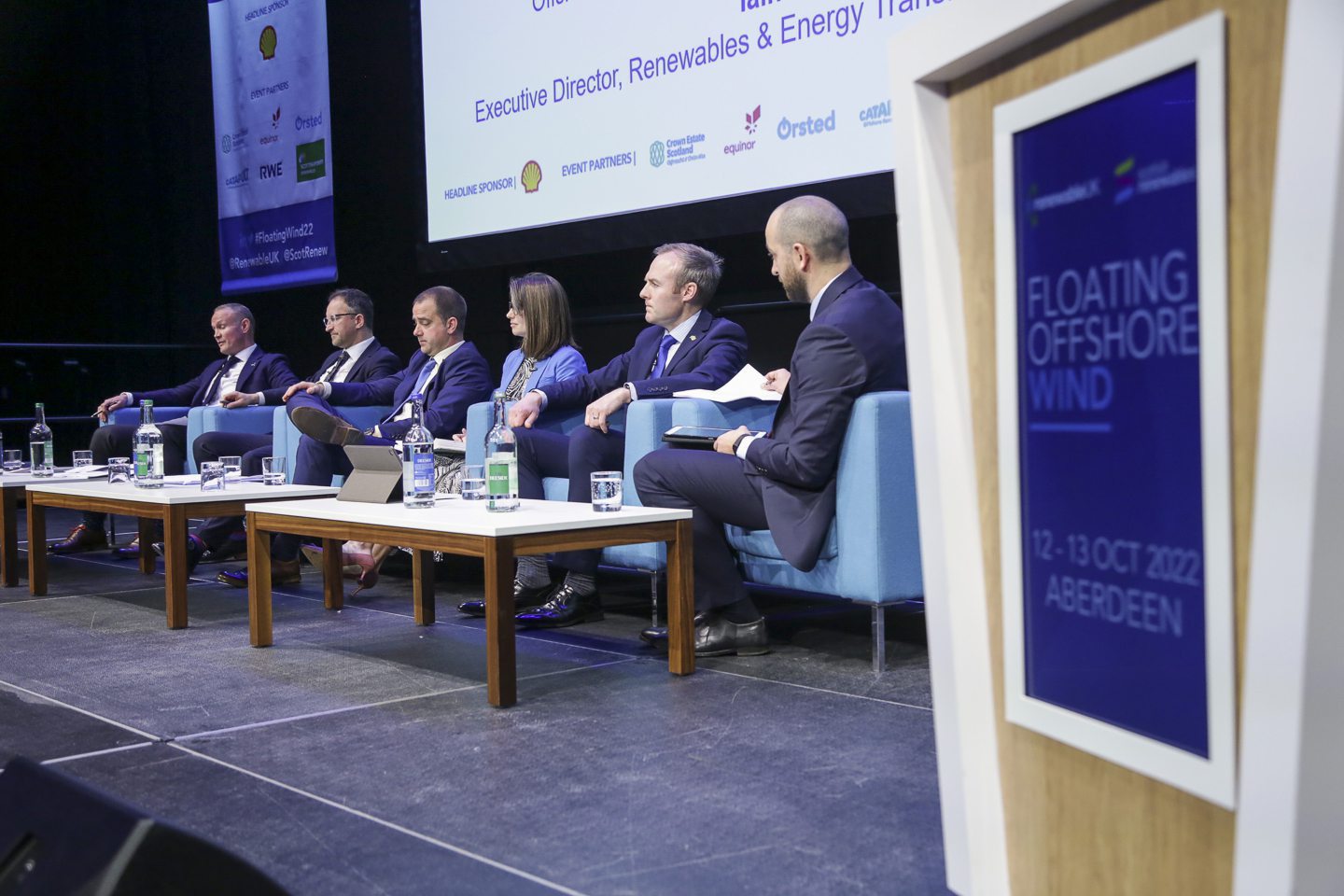
Getting ScotWind projects over the finish line is indeed “a race”, a major conference in Aberdeen has heard, but the supply chain mustn’t be left behind.
Orsted, ScottishPower Renewables and SSE discussed the merits of quickly getting the gigawatt-scale projects to their targeted operational dates around 2030 at the Floating Offshore Wind conference in Aberdeen.
They also discussed whether the UK supply chain is being supported through development as industry seeks to meet those goals.
Andrew Lewin, floating offshore wind project director at SSE Renewables, said: “Is it a race? Yes it’s a race – and I think it should be a race as well, I think a bit of competition is healthy.
“I think you’ve got to get the balance right. What I like about characterising it as a race is it infers that need for speed. I think as an industry we need to be moving quickly and have those ambitions, those targets we’re striving for.”
The caveat for Mr Lewin is that industry needs to ensure the industry is not making “poor short-term decisions” that aren’t in the long-term interest of the country.
ScotWind is a multi-billion pound seabed auction which launched awards in January – delivering up to 25GW of offshore wind around Scotland’s shores, a huge chunk of which will be floating.
Richard Eakin of Scottish Power Renewables, project director for its joint venture floating wind projects Marram and CampionWind with Shell throu gh ScotWind, said old ways of working won’t cut it.
ScotWind timescales
He said the “political price to pay” is too high, if industry doesn’t get local content right with ScotWind.
“There has to be a recognition that if we want to have this type of industry in this country to support the construction and operation of these huge projects, it has to be done in the right way.
“We can’t just engage in this very rapid race to the bottom where we’re all competing and getting all of the bits and pieces and things we need from anywhere in the world, whatever’s cheapest. That’s not going to work and that’s certainly not what we want to do.”

Asked on whether industry is in a ScotWind race, he added: “I would frame it as a collective race to net zero. We’re all in that race together.
“I think there needs to be an element of realism about the timescales of these projects. There’s no question the timescales for many of these projects will move for various reasons. It might be related to creative, it might be related to consenting issues.
“Of course that means this very congested landscape at the minute might change over the next year or two.
“It maybe comes back to openness, this is where there’s an obligation on developers to be a bit more open about their programmes for their respective projects. Make sure we’re not all trying to target exactly the same thing for exactly the same time, and it just doesn’t add up.
“And maybe try and look at it in a way where projects can complement each other rather than compete with each other for the same facilities.”
‘It really makes no sense having finished structures towed from the other side of the world’
Iain Sinclair, executive director of renewables and energy transition at fabricator Global Energy Group, based at the Port of Nigg, told the panel that all parties including government are making the right comments, but that needs to filter through into projects.
“How does that play out in a local content perspective? Look, I think it’s quite clear the UK cannot right now or in five years’ time do everything that’s required. In 10 years’ time, we’ve probably got a better chance. The scale and size of everything we’re talking about is just so significant.
“It really makes no sense having final assembly and finished structures being towed fro m1-4 knots from the other side of the world.
“I think there’s a rationale to have that connectivity for joining the dots and starting to piece together quite quickly whose doing substructures, where’s final assembly, what are the loadout principles, what substructure fits that agenda.
“How does that translate right now? Yes, there’s a government drive. But there’s a genuine desire from the developers we’re speaking to have that. It’s sensible. You can have management teams locally based, you can have the cluster effect which is really important because that’s where you get scale and efficiency.
“There’s a cost attached to that at the front end. But like everything else, innovation and efficiency drive that cost out. That has to be part of the model.”
Recommended for you

